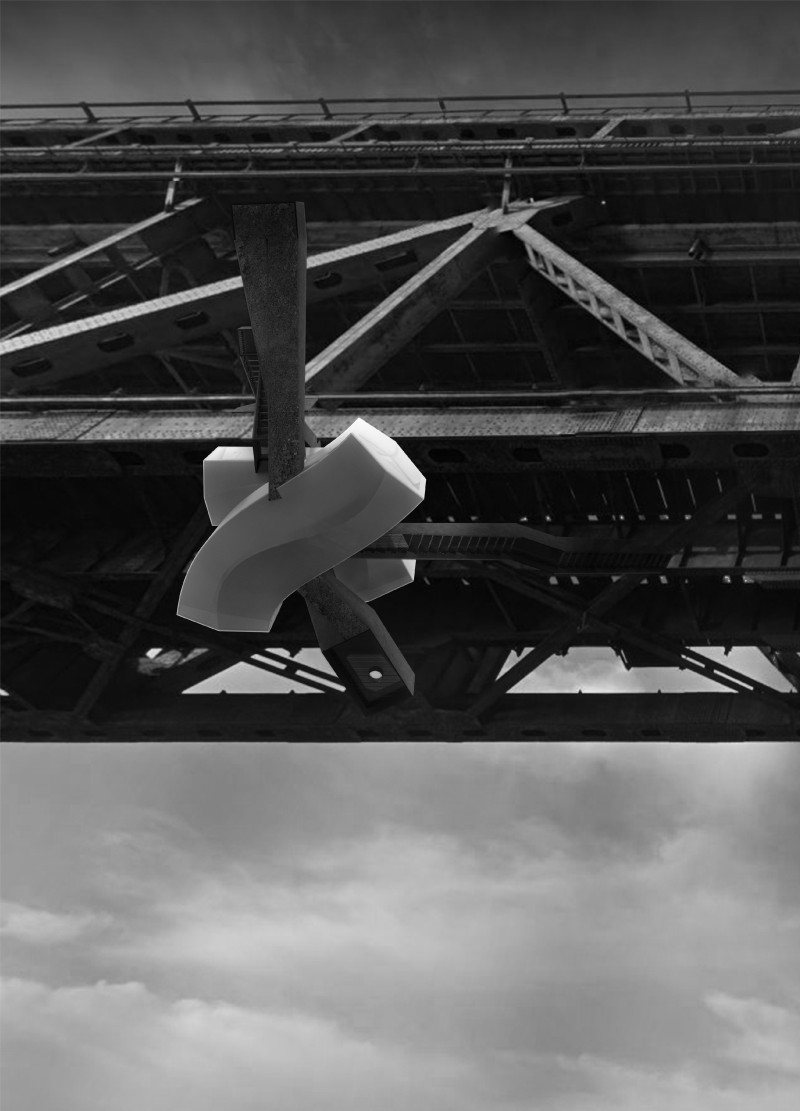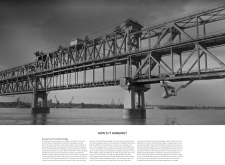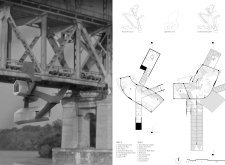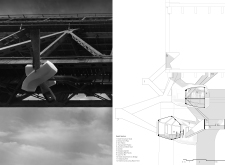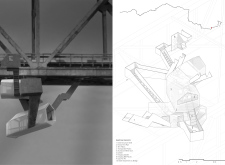5 key facts about this project
The architectural design emphasizes a cohesive relationship with the surrounding environment. By incorporating elements like green spaces, communal areas, and transparent structures, the bridge establishes a dialogue between the man-made and the natural, promoting environmental awareness and community engagement. The project is a response to the need for improved infrastructure that fosters connections across the Danube River, manifesting both as a transit route and a social hub.
Functional Design Elements
The bridge features a variety of elements that contribute to its overall usability and aesthetic. Key components include load-bearing structures made of hard structure steel, ensuring durability and safety. Hollow tent pipes are employed to create flexible designs within the bridge's supporting framework, while tent fabric and transparent plastic materials are used to optimize natural light and views. The integration of aluminum mesh stairways improves accessibility throughout the structure.
Another notable feature is the inclusion of communal spaces, such as dining and kitchen areas, designed to encourage social interaction among users. Gas fire pits are strategically placed to enhance comfort and foster gathering. The incorporation of vertical gardens and hanging terraces further emphasizes a sustainable approach, blending greenery with the built environment.
Unique Design Approaches
This project distinguishes itself through its unique architectural approach to bridge design. The idea of creating hanging living spaces deviates from conventional bridge formats, allowing for dynamic interaction with the landscape. Additionally, the integration of biophilic design principles highlights the importance of natural elements within urban infrastructure.
The adaptive reuse of existing structural components reflects a sustainable mindset by minimizing material waste and reducing the environmental impact of new construction. By leveraging existing infrastructure and adding innovative features, the Giurgiu-Ruse Friendship Bridge emerges as a forward-thinking example of architecture that prioritizes functionality while promoting community involvement.
For more detailed insights into the architectural plans, sections, and designs of the Giurgiu-Ruse Friendship Bridge, readers are encouraged to explore the project's presentation. This will provide a deeper understanding of its design concepts and functional aspects, showcasing its potential as a model for future infrastructure initiatives.


